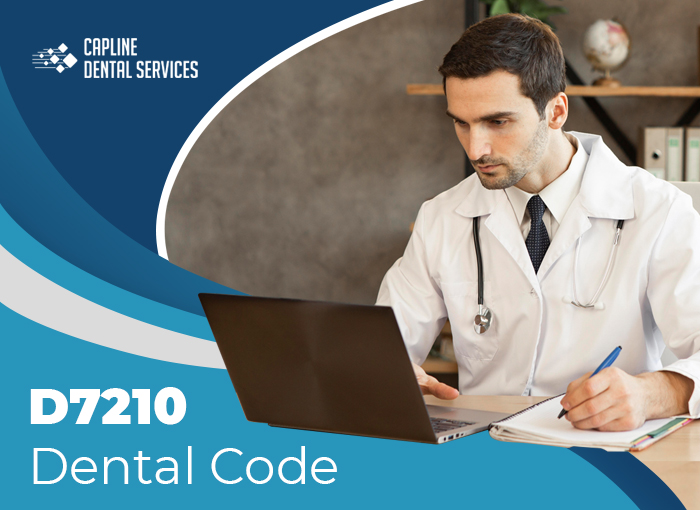CDT D7210 Dental Procedure Code
Don’t be surprised if dental codes sound confusing to you! Both dental professionals and dental patients find them hard to understand at times. One of the many dental codes is D7210. This dental code is submitted if the extraction of an erupted tooth entails bone removal and/or tooth sectioning.
Normally, D7210 is reimbursed at a 150–180 percent higher rate. The higher charge is justified by the fact that the removal procedure takes longer and is more difficult.
Let us learn more about the D7210 dental code through this blog.
When and how to use the D7210 dental code?
D7210 should be handled with caution. You need to explain the process in detail in the clinical notes. Mentioning typical notation like, "Elevated flap (if appropriate) and extracted the bone and/or sectioned teeth, might not work. You can change it to, “The measures taken during the treatment were necessary to extract the tooth."
Points to consider:
- If you want to prove that the treatment was completed and that the procedure qualifies as a D7210 extraction, a photograph of the sectioned tooth taken with an intraoral camera is recommended.
- Indicate whether or not a bone was removed during the extraction and why it was necessary, such as if the tooth was fractured below the level of the bone.
- Also, you need to explain why the tooth was sectioned during extraction. For example, if the tooth had curved roots, sectioning was required to extract the tooth as painlessly as possible.
- The documentation should include a current diagnostic radiography image as well as any accompanying images.
- When a tooth is taken without bone removal and/or dental sectioning and only a suture is put, it is deceptive to report D7210 for the extraction of an erupted tooth. D7210 involves bone removal and/or tooth sectioning. If no bone is removed and/or the tooth is not sectioned, do not report D7210.
The use of sutures does not elevate the extraction to that of an erupted tooth. D7210 necessitates bone excision and/or "teeth sectioning." The service is elevated to that defined in D7210 by sectioning the teeth. D7210 includes the elevation of a mucoperiosteal flap if necessary.
Possible drawbacks of the D7210 dental code
- D7210 is a code that denotes the end of extraction. Before accepting reimbursement under the dental plan, several payers require submission of the more involved D7210 procedure to the patient's medical insurance. If the claim has been submitted to the medical payer, attach the medical explanation of benefits to the dental claim form.
- When alveoloplasty is done at the same time, it is generally considered a part of an extraction. The excision of incidental bone (D7210) is not considered a separate billable alveoloplasty procedure. See alveoloplasty in conjunction with extractions (D7310/D7311) if multiple extractions are required in close proximity or considerable bony recontouring is required.
- Suture placement and removal, limited bone smoothing, closure, and routine follow-up are all included in the D7210 fee. Treatment for an infection that spreads after tooth extraction may be reimbursable (D9930).
